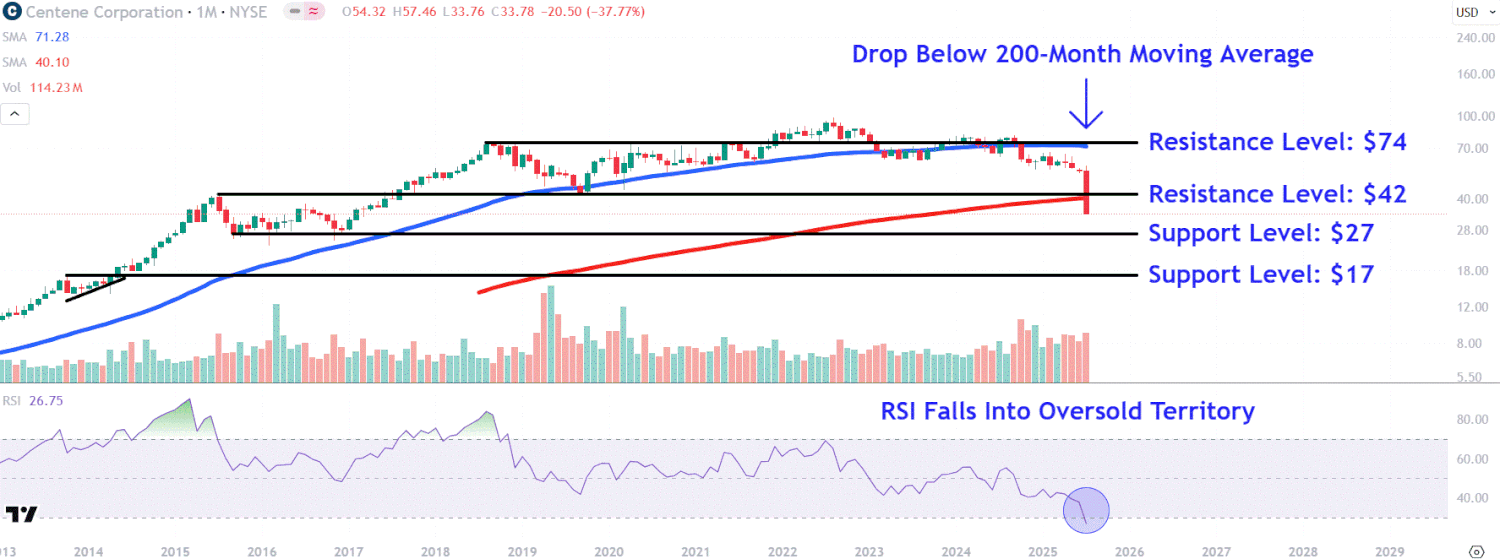Centene Corporation experienced a dramatic 40% drop in its stock on Wednesday, falling to $33.78, marking its lowest closing price since early 2017. This steep decline follows the managed-care provider’s announcement that it is retracting its full-year financial outlook due to alarming new data regarding enrollments and escalating member health costs.
The company’s decision stems from reports across its primary marketplaces indicating that enrollment growth has lagged expectations, coupled with higher rates of patient illness than previously forecast. These factors have led to an anticipated reduction in federal reimbursements and increased costs, amounting to an impact of approximately $1.8 billion on 2025 results, equivalent to $2.75 in adjusted earnings per share.
Since reaching a record high in August 2022, Centene’s stock has lost about two-thirds of its value. In 2025 alone, shares have plummeted 44% as the company and its competitors face challenges related to rising medical expenses and diminishing enrollments.
The stock has entered a significant downtrend, particularly since early July, when it fell below the crucial 200-month moving average and the relative strength index signaled oversold conditions. This decline has been accompanied by above-average trading volume, suggesting strong selling pressure from major investors.
For investors analyzing Centene’s stock, key support levels to observe lie around $27 and $17. A potential dip to $27 could attract buyers, as this range represents a historical sideways trading period from late 2015 to early 2016. If the stock breaks below this point, it may face further selling pressure, testing support at $17.
Conversely, should the stock rebound, resistance levels are expected at $42 and $74. The $42 mark could pose a significant challenge due to previous price action and its alignment with the upward-sloping 200-month moving average. A significant breakout past this resistance might lead to a notable increase towards $74, where investors who purchased shares at lower levels may choose to take profits.
As always, investors are encouraged to conduct their own comprehensive analysis before making any financial decisions. The insights provided here are for informational purposes only and should not be construed as investment advice.












